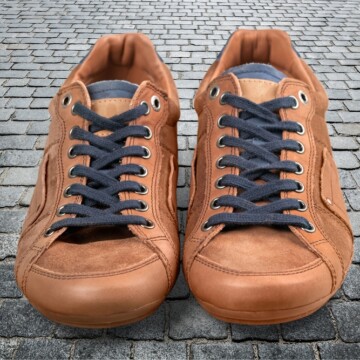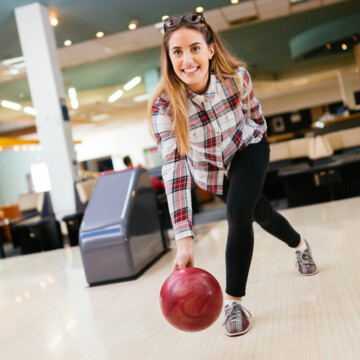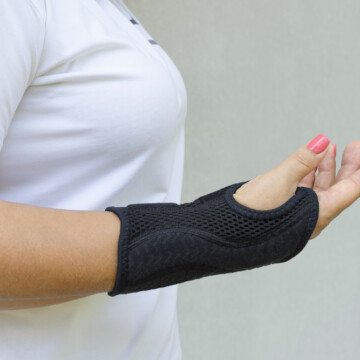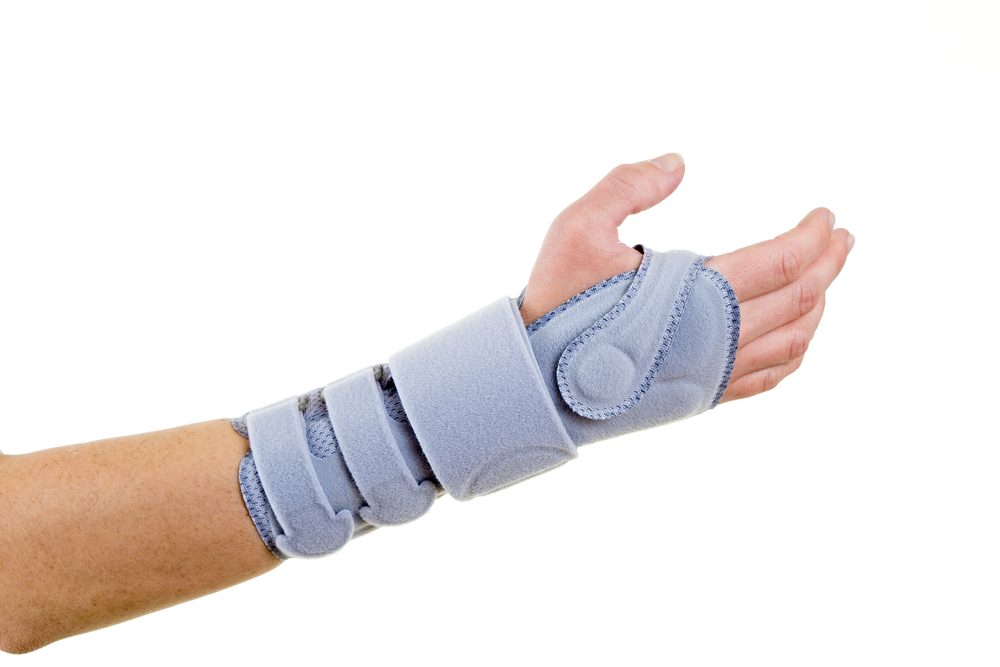
There are some individuals out there who do not consider bowling to be a physically taxing sport. Unfortunately, this belief could not be farther from the truth.
When you bowl, you use a variety of different muscle groups throughout your stance, approach, and release.
This constant use of different muscle groups burns calories, stretches and strengthens muscles and helps keep your organs healthy and in better shape.
While there are many positive perks to bowling, such as social interaction and the previously mentioned physical benefits, it is a low impact sport.
Due to this, you may feel sore from time to time after you bowling, this is perfectly normal and is part of your body's process in breaking down and rebuilding muscle tissue.
But what if the aches and pains persist?
What if you continue to be sore days after you bowl or an ache hangs around for an extended period of time?
If this lingering ache occurs, usually in the wrist, shoulder or knee for bowlers, then it is time to see if there is an underlying cause such as an injury to the muscles or joints. So let's discuss the best wrist brace for bowling and wrist pain.
Contents
- 1 Tips for Bowling with Wrist Pain
- 2 Why Does My Wrist Hurt After Bowling?
- 3 What Are Common Bowling Wrist Injuries?
- 4 Repetitive Motion Injuries
- 5 What Are Some Ways to Prevent Bowling Wrist Injuries?
- 6 Do Bowling Wrist Supports Work?
- 7 What's the Best Wrist Brace for Bowling?
- 8 What Are the Best Wrist Exercises for Bowling?
- 9 Should You Use Wrist Tape When Bowling?
Tips for Bowling with Wrist Pain
Wrist pain is perhaps one of the most common occurrences when you take part in the sport of bowling. Your wrist is used to support your ball as you shift into the proper stance.
You also use it to control how your ball will react as you release it and use it to help release your throw. That is a lot of work for one specific joint!
Key Takeaways
- Bowling Injuries and Prevention: Regular bowling puts stress on key joints like wrists, leading to injuries such as carpal tunnel syndrome. Protecting your wrist is crucial to prevent pain and maintain proper throwing form.
- Wrist Brace Benefits: A wrist brace, like the Brunswick Bionic Wrist Positioner, offers adjustable, lightweight support, reducing the risk of common bowling injuries and improving throw consistency.
- Listen to Your Body: Persistent wrist pain after bowling signals a need for rest and possibly medical attention. Ignoring continuous discomfort can worsen injuries, impacting your ability to bowl.
- Exercise for Strength and Flexibility: The United States Bowling Congress recommends that you incorporate specific wrist exercises to strengthen and stretch muscles, improving your accuracy and versatility in your throws.
- Correct Equipment Use: Choose a bowling ball of the correct weight and consider wearing a wrist brace for added support and injury prevention. Proper form and equipment can significantly lower the risk of long-term injuries.
Why Does My Wrist Hurt After Bowling?
When you bowl your wrist goes through a variety of repetitive motions. Over time these motions can cause strain and injury to the wrist. When this occurs our wrist will let us know that something is wrong with aches and pains that flare up as our wrists are used.
What is important to realize is that when our wrists are persistently in pain we need to listen to what they are telling us and schedule an appointment with a physician.
Many bowlers have ignored repetitive aches for them to only worsen to the point where they cannot bowl anymore. When they finally do go in to get the injury checked out they usually find they started off with a simple injury that grew considerably worse since they did not rest or treat it.
Listen to what your body is telling you, do not ignore persistent pain, and get it checked out, the sooner the better!
What Are Common Bowling Wrist Injuries?
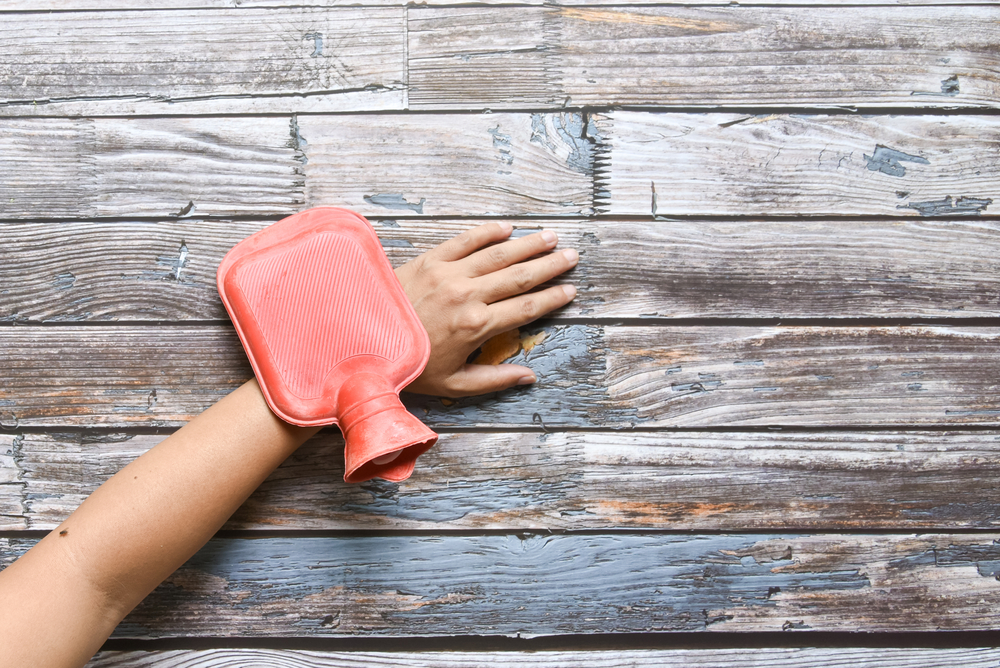
Since the motions of the wrist are pretty universal in the realm of bowling there are several common injuries that can occur for bowlers. While preventive steps can be taken to lower the risk of injury by giving your bowling wrist support, there is no guarantee that you will go through your bowling career unscathed.
Know what these common injuries are can help you recognize the signs and symptoms of them and help give you an idea of when your wrist is just sore or when you need to seek a doctor’s opinion.
Repetitive Motion Injuries
Not only is this one of the most common injuries in bowling, it actually is one of the most common injuries in the country.
Repetitive motion injuries are were a tendon (the white fibrous material that connects bone and tissue) or a bursa sac (a small sac used to cushion the area between the bone and tendon against friction) are unable to repair tears that occur through activity and become inflamed.
This inflammation is what creates the sensation of pain. If the site of the injury is not given rest or the repetitive motion that caused the injury continues then the pain could worsen and more serious injuries could occur.
Common symptoms of repetitive motion injuries are:
- Pain
- Tenderness
- Swelling
- Hot or red skin
- A ‘crunchy’ feeling when the joint is moved.
To treat repetitive motion injuries the first step is to stop the motion that caused the injury in the first place. So while you may need to take a few weeks off from bowling (never a fun idea) it is a lot better than injuring yourself further (and possibly extending your recovery time).
Ice your wrist at least 2-3 times a day for 20-30 minutes to help reduce the swelling and relieve some of the pain. Consult your doctor as well and follow their recommended steps to ensure a full recovery.
Tendinitis (Elbow Strain)
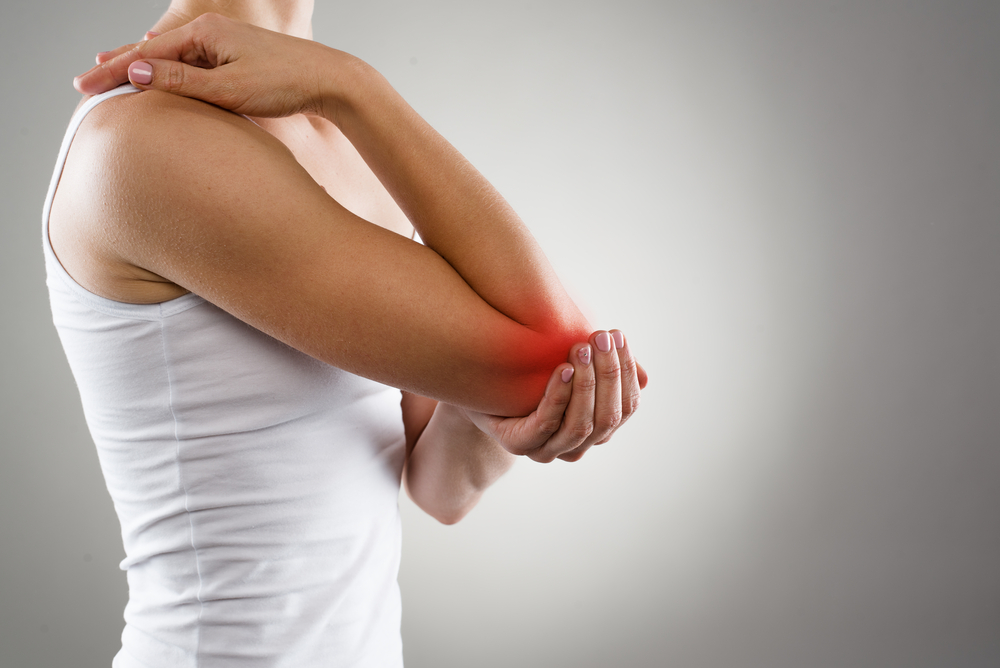
Tendinitis is very closely related to repetitive motion injuries in the fact that it is caused by a tear in the tendon, resulting in inflammation and pain. This tear usually happens in the elbow but it is still possible for it to occur in the wrist.
Common symptoms for tendinitis are:
- Pain in the affected area
- Pain increasing suddenly and severely
- Loss of motion in the affected joint
- Stiffness in the joint
To treat tendinitis doctors usually recommend following the RICE (Rest, Ice, Compress, Elevate) method of care. If it continues to be a problem doctors will usually look to anti-inflammatory drugs or refer you to a physical therapist.
Carpal Tunnel Syndrome
Carpal tunnel syndrome is where the median nerve, the nerve that controls the feeling and movement in your thumb and most of your fingers, is pressed on.
This pressure usually comes from swelling of the carpal tunnel, a passage in your wrist that lets the median nerve pass from the hand up the length of your arm. This swelling can occur with repetitive motions (like bowling constantly with your wrist) or with conditions such as diabetes, rheumatoid arthritis, hypothyroidism, and obesity.
Common symptoms of carpal tunnel are:
- Numbness in the hand
- Tingling in the hand
- Weakness in the hand
- A burning sensation in the hand
- Slower nerve impulses in the fingers
- Pain and cramping from the loss of muscles
- Loss of strength and coordination in the hand
- Permanent muscle damage
- The lost of function in your hand
To treat carpal tunnel it is best that you seek out medical advice right away. Since carpal tunnel can lead to the loss of function in your hand it needs to be treated seriously!
For pain management and self-care, your doctor may advise resting your hand and wrist, icing them regularly, placing the affected wrist in a warm bowl of water and flexing your fingers and wearing a wrist brace for support.
In more severe cases steroid or corticosteroids may be recommended or you may even need surgery.
| Injury Type | Common Symptoms | Recommended Treatment |
|---|---|---|
| Repetitive Motion | Pain, tenderness, swelling, red skin, 'crunchy' joint | Rest, ice, consult doctor |
| Tendinitis | Pain in affected area, sudden severe pain, stiffness | RICE method, anti-inflammatory drugs |
| Carpal Tunnel Syndrome | Numbness, tingling, weakness, burning sensation in hand | Rest, ice, wrist brace, consult doctor |
What Are Some Ways to Prevent Bowling Wrist Injuries?
As you bowl there are several ways you can protect your wrist from injury! Taking these preventive measures will help keep your wrist good health and lower your chance of developing serious injuries like the conditions mentioned above.
Stretching
Like with all sports stretching before, during and after exercise will help decrease the chance of injury in your joints and muscles. Bowling is no different! Before you bowl, during turns and after you should always make sure to stretch the muscle groups you use, wrists included!
Proper Form
As you bowl, make sure you use the proper stance and form. This will help ensure you are using your muscles and joints correctly and lower risk of injury.
Proper Bowling Ball Weight
The importance of using the correct bowling cannot be stressed enough. Bowling with the correct weight still increasing strain on your wrist but to bowl with a heavier ball increasing that strain to an unhealthy level.
When you throw a heavier bowling ball the increase in pressure and strain greatly increases your chances of developing long-term injuries over time.
Wear a Wrist Brace
Braces can be great to help already injured wrists but they also work amazingly well at preventing injuries in the first place! Wearing a brace while practicing is always a great way to keep your wrist safe and lower your risk of injury.
Do Bowling Wrist Supports Work?
The answer to this question is yes and no. It all depends on the purpose and type of brace you use. Everyone’s wrist and style of bowling is a little bit different. So one type of wrist support may work for one bowler another could need a totally different brace.
If you were to look at if a wrist brace works for the simple use of supporting your wrist there are many out there with varying degrees of support to suit your individual needs. A lot of bowlers also use wrist supports to help stabilize their bowling, train their wrist for certain releases or use the support to increase their bowling power.
This increase in bowling skills happens due to the fact that the support helps keep the wrist firm and consistent through the throw and also lowers the wrist at the ball’s release point. This leads to well-aimed throws, better hook throws, and a higher rev (revolution) rate.
Due to the changes that can occur with the use of wrist support (i.e., wearing a bowling wrist brace), it is important to make sure you practice with your wrist brace before a serious game.
You will need to get used to the changes in both the feeling and technique you undergo as you use your selected support.
What's the Best Wrist Brace for Bowling?
We often recommend the adjustable, light-weight Brunswick Bionic Wrist Positioner. Although, if you are looking to support your wrist you will probably want a full hand brace.
It would be a good idea to look for a brace that is specifically designed to support a bowler's wrist, one that has metal supports and firm fabrics. There are also bowling wrist braces that have these features and use velcro straps to firmly wrap around the whole wrist, these are excellent for support!
When looking for a brace you should also look at other factors as well. Ventilation to avoid sweaty hangs, adjustability for proper fit, and affordability to keep your wallet well stocked are all good points to consider.
Taking these factors into account a wrist brace like “Kool Kontrol Wrist Positioner”, has three velcro straps. In addition to “Storm Xtra-Hook Wrist Support” has two adjustable straps, and gives support to the index finger.
If they do not suit your needs then looking into a Mongoose brace would be a good step up, they will cost a bit more though but are known for offering great support and protection.
The Kool Kontrol Wrist Positioner and Brunswick Bionic Wrist Positioner are both fantastic options for durable wrist support.
| Wrist Brace | Features | Benefits |
|---|---|---|
| Brunswick Bionic Positioner | Adjustable, lightweight material, comfortable fit | Provides support, improves throw consistency |
| Kool Kontrol Wrist Positioner | Velcro straps, firm fabrics, metal supports | Durable, exceptional support, secure fit |
| Storm Xtra-Hook Support | Two adjustable straps, extended finger support | Enhances grip, facilitates proper thumb release |
What Are the Best Wrist Exercises for Bowling?
When you are looking to exercise your wrist in preparation of bowling there are three exercises you can use.
These exercises come from the USBC (United States Bowling Congress) and are designed specifically to strengthen and stretch the wrist muscles used during bowling. These exercises also help improve your accuracy and versatility during the throw.
Softball
The first exercise is done by cradling a small, soft weight ball in your hand. The ball should weigh about four pounds and can be substituted with a can of fruit or vegetables should you not have a softball weight readily available.
To begin, cradle the ball in your hand and do about ten curls up towards your elbow. This should work the flection muscles in your hand and wrist and help stretch them out.
After ten reps flip your hand over and work the extension muscles by curling your hand down toward your wrist. Be careful not to overextend or pull, you are working to prevent injury, not cause it!
Dumbell
The second exercise can be done with a five-pound dumbbell or a stick like figure (a baton or kitchen spoon for example) with a small weight attached to one end.
(Ankle weights or taped on fruit work great) Holding the one end of the dumbbell or the non-weighted end of your stick rotate your wrist back and forth, stopping the motion when the weighted end is parallel to the floor before rotating back to the other side.
Completing these semi-circles (make sure you don’t do full circle rotations, that can damage your tendons) helps increase your wrist’s range of motion and strengthen the muscles used for hook throws and other releases.
Broomstick
This exercise can be completed with a broomstick or any other similar level like objects. (Mops, dusters, Swifers, you name it!)
If you want to get really fancy you can also go to your local hardware store and purchase a capped off PVC pipe that is about the same length as a broomstick and fill it with sand.
To start the exercise extend and lock your elbow, hold one end of the stick so it rests against the floor in front of you and lift the other end of the stick until it is parallel to the floor.
After about ten reps of this switch sides so the end of the stick rests behind you. This time you want to raise the stick to it goes above your hips, making sure that elbow stays nice and locked.
Should You Use Wrist Tape When Bowling?
A lot of bowlers (pros included) choose to use wrist tape while bowling instead of a fabric or metal brace.
While tape can be great to offer small scale added support, in order for it to work it must be wrapped around the wrist correctly.
This is where you'll increase your risk of injury if you use tape. If you don’t wrap it properly or consistently from use to use, it could affect your form or not support your wrist at all.
Through practice and careful wrapping, it can be used alongside any other support and if you find it works best for your style go for it!
Related Articles
My Final Words
To elevate your bowling game and safeguard your wrist, consider integrating a wrist support device such as the Kool Kontrol Bowling Wrist Positioner or Brunswick Shot Repeater into your equipment arsenal. These braces are designed with forward wrist cup positions, extended finger support, and lateral adjustments to ensure your wrist remains in the proper position for both hook shots and a consistent roll. They offer exceptional support through durable materials like high-quality aluminum construction and metal inserts, ensuring a secure fit and the ability to withstand heavy ball pressures.
By focusing on maintaining your wrist in both lateral and forward positions, these supports facilitate proper thumb release and axis rotation, which are critical for achieving precision and power in your throws. Whether you have sensitive wrists or want to refine your technique with extra wrist support, choosing the best wrist support can significantly enhance your performance while providing excellent protection and comfort. The best bowling wrist support will minimize pain and provide proper wrist positioning for your throw and release.
Kira Byrd, a Certified Fraud Examiner, holds a B.S. in Accounting from the University of Alabama at Birmingham. With a passion for bowling from her childhood, Kira has poured her expertise and personal experiences into creating and nurturing Bowling For Beginners. Kira's mission is to meet new bowlers where they are and guide them toward consistently achieving higher scores. With a focus on skill development and strategic techniques, she empowers readers to take control of their game and unlock their true potential.
Bowling For Beginners embodies strict editorial integrity, ensuring reliable and unbiased information. Kira's commitment to delivering valuable insights and practical strategies is reflected in every article. Here's an explanation of our editorial policy and how we get money.


